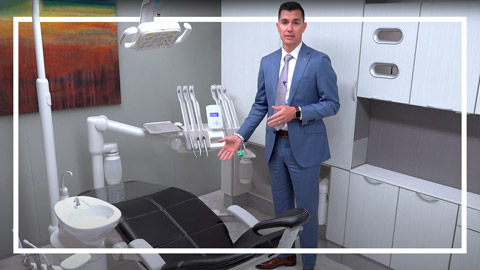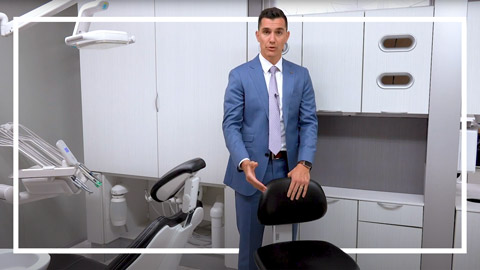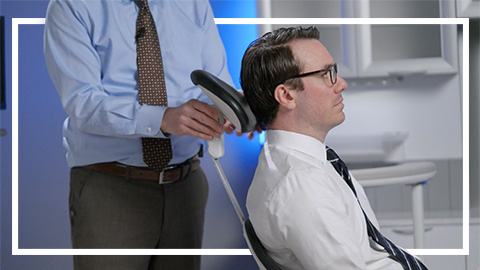See How Proper Seating Helps Your Body—And Visibility
Duration 1:30See how proper seating in your dental stool promotes better posture and accessibility to the oral cavity.
Video transcript
My name is Roy Fried. I'm an A-dec Territory Manager in Minnesota and the Dakotas. So let's begin with patient positioning. This is the key to beginning correctly with good ergonomics. Number one, I have to say, what I often find in dental offices is the patient is seated incorrectly, and that makes you bend your neck and your back in order to see into their mouth. So what we see often is the armrests are up and that forces the patient to enter the chair where the knee should be, and now they don't slide back all the way. That doesn't give you the height that you need to see better in their mouth. Secondly, I often see the headrest all the way down. What we're wanting to do to start this correctly is to always put your armrest forward so the patient can enter at the right location.
When they turn, we want this headrest to be higher. We want it to be a goal for them to put their head. By doing these two things and doing them faithfully, you'll find you and your assistant won't have to bend over and stress your back and your neck. It's important that you sit with your hips above your knees. For decades, we've seen many dentists sit with their legs parallel to the floor, and that promotes poor posture because we're looking forward and we're looking down. So what we want is we want that stool seating to be higher so that you have a natural downward turn from your hips down to your knees. Number two, you would want to have the ability for the seat to tilt forward, and you would also want the ability to adjust the backrest so that it fits into the small of your back.
So what we're looking at here is getting tall enough in the seat so that you have a nice downward slope from your hips to your knees, and that way when the patient is seated, you have this nice slope to your knees, which will easily go under the back of the dental chair, allow you to get in closer to the patient's head, keep your arms parallel to your body, and be close to the oral cavity. Last but not least, you'll notice that you have a back support on your stool that can go up or down. And this is meant to be able to go into the small of your back so that you can feel that pressure slightly and take the weight off of your back.
Related videos
A-dec 500 Dental Chair Overview
Explore the features and benefits of the A-dec 500 dental chair.
A-dec 521 Doctor's Stool Overview
Discover the ergonomic features of the A-dec 521 doctor's dental stool.
Headrest Seating And Positioning Tips
A-dec equipment is designed for healthy ergonomic positioning and optimal viewing angles. The key is properly adjusting it for each user.



